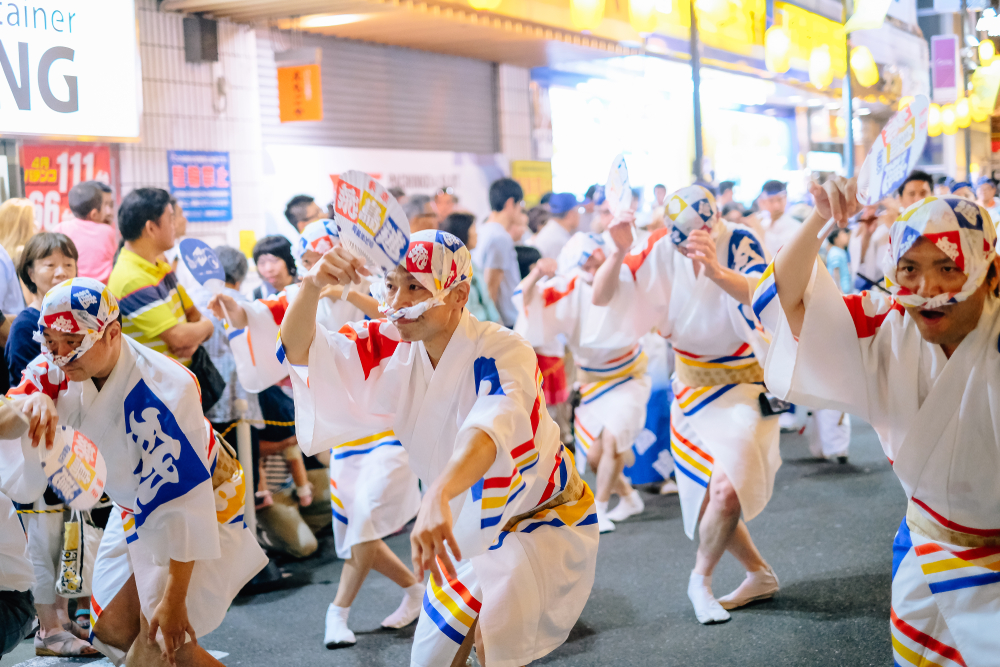

Tickets for the reserved seats range from about ¥ 2,000 to ¥ 6,000 in price and can be purchased in advance at the Information Center in front of Tokushima Station, at local convenience stores, or on the official website. The main dances are performed from the 12th to 15th, but the Evening Selection is held on the night of the 11th.

Awa odori for free#
Dancing takes place in the street (which can be viewed for free - such as at Ryogoku Honmachi Shopping Street) and at several stages and arenas with reserved seating. The streets of central Tokushima City are closed to traffic each evening of the festival.

Many of the female dancers wear distinctive hats resembling folded tacos which are made from tatami. There are a variety of styles of dress for men and women, and they typically dance separately or together in large choreographed groups. The festival was renowned as a raucous and drunken event, and over the years a distinctive dance style emerged. Awa was the pre-Meiji name for the area in which Tokushima city is located. The dance festival ( odori means dance) has its origins as a summer obon festival. It takes place in Tokushima - a prefecture on the island of Shikoku. One group which annually welcomes over a hundred non-Japanese amateur dancers is called Arasowa-ren (あらそわ連), meaning “cannot/will not fight”, emphasising its goal of international cooperation.Tokushima Awa Odori is rated by many as Japan’s top summer festival. The suffix “-ren” is used for all groups, and its meaning of “unable to” in the local dialect is used for wordplay in group names. There are ren formed by community groups and others sponsored by national companies or made up of staff and customers of local businesses. Others are less formal, and practice only in the summer months. Some ren have a long history, and members practise all year round in preparation for the festival. Each ren has its own musicians who play the Awa Yoshikono, and there is usually also a dancer carrying a paper lantern with the ren’s name at the front of the group. While onna-odori dancers stand tall and elegantly for their dance, otoko-odori is more wild, and dancers bend their knees and keep their bodies low as they proceed. Clothing is often branded with the name of the ren. For otoko-odori, dancers wear either a yukata, tucked in at the bottom, or a happi (法被, a short, light festival coat) with shorts, and wear only a special kind of rubber-soled tabi (足袋, traditional sock) on their feet.

The onna-odori dancers wear yukata (浴衣, a light summer kimono), a straw hat, and geta (下駄, wooden sandals) on their feet. Most ren are made up of both types of dancer. While otoko-odori is performed by men and women alike, onna-odori is performed by women only. There are two forms of dance performed within Awa Odori – the men’s dance, otoko-odori (男踊り) and the women’s dance, onna-odori (女踊り). (Women dancing the onna-odori) The Dancers Thousands of ren ( 連, dance groups) gather in Tokushima City and perform in the streets over the course of the festival. Its popularity has allowed it to become the best-known of the bon dances. Tokushima’s Awa Odori festival runs from the 12th-15th August and, attracting well over a million visitors every year, is one of the largest dance festivals in the world. Traditional lyrics to the music used for Awa Odori translates to “The dancers are fools and the watchers are fools if both are fools, you may as well dance”. While there is no firm evidence to support this, the exuberant, sometimes frenzied nature of the dance is in keeping with the story’s theme of drunken revelry. There are tales of Awa Odori originating in the 16th century after drunken revellers took to dancing in the streets of Tokushima in celebration of the completion of Tokushima Castle. “Awa” is the name of the feudal province which later became Tokushima. Awa Odori comes from Tokushima Prefecture on the island of Shikoku.


 0 kommentar(er)
0 kommentar(er)
